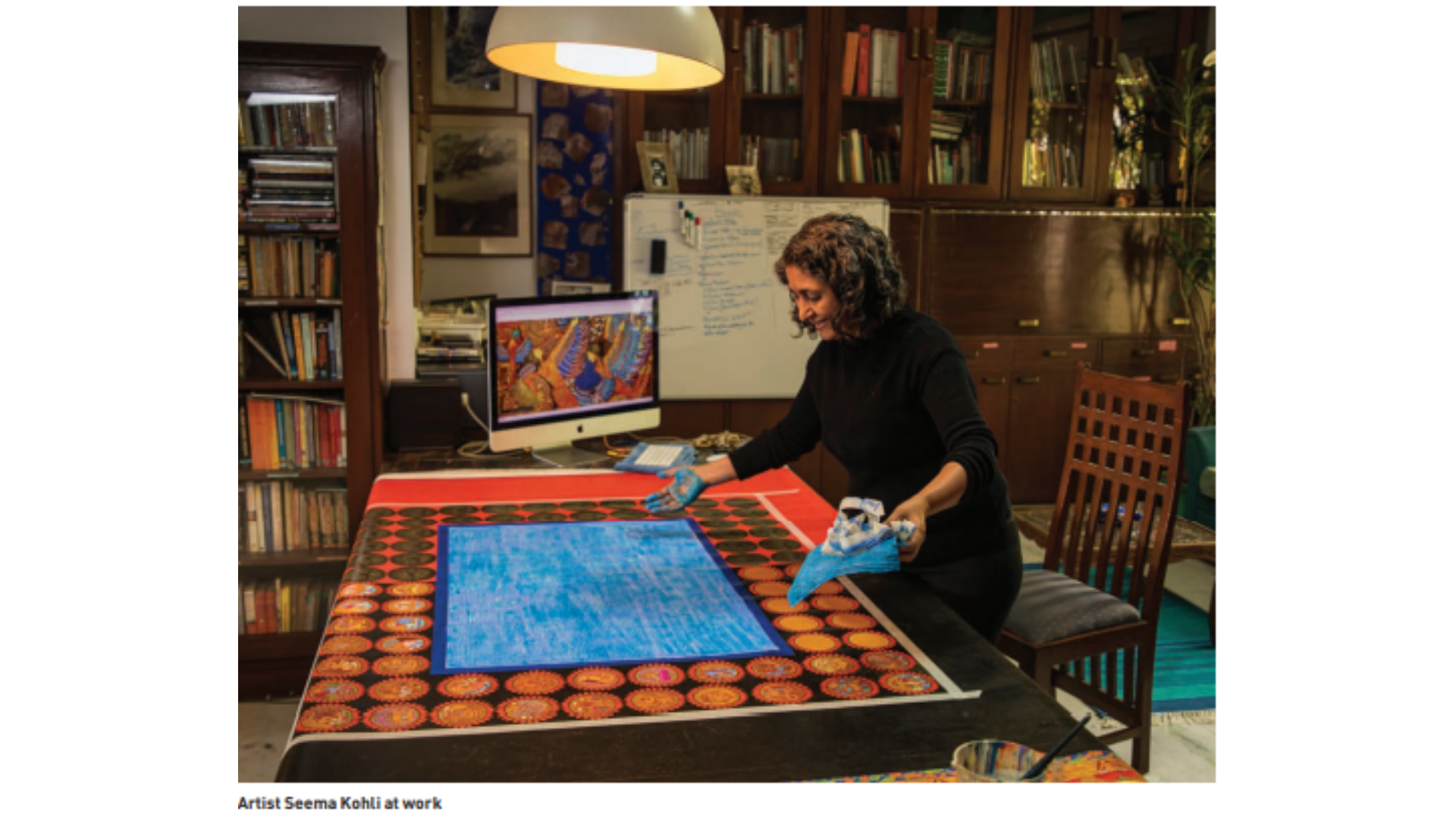‘Over the course of my practice, there were times I felt that my work needed an interpretation beyond how it was perceived,” says artist Seema Kohli. Known for her mixed media works of varying sizes and impressive oeuvre influenced by memory, oral histories and spiritual experiences in worlds where the mythical overlaps with real life, her desire was certainly well-founded.
And now, it has resulted in a curated collection of essays titled ‘Restless Line in the Art of Seema Kohli’. The collection contains critical essays and interviews that trace her artistic journey of four decades and “her need to play and experiment with form and story building, with references to her paintings, installations, performance and works in the written word”. The book has been edited by Annapurna Garimella and Sindhura DM, with insight provided by Anshika Varma of Offset Books who acted as consultant during the publication process. It contains essays by 11 writers from diverse backgrounds and is divided in four parts: The Body is her Studio, Our Myths Feed her Fantasies, Her Workshop is her Shrine and In Continuum. The book was recently launched at both the Jaipur Literature Festival and the India Art Fair, with a number of its contributors coming together for a conversation on the subject. On the occasion, we caught up with the artist herself to speak about her latest project.
Excerpts from an edited interview:
Q: What was the process of working on this book like?
A: It was an intense process and took many years to complete. The editors decided the first few authors and later I put my own ideas across about who we could involve in the writing of the book. The idea of dividing it into parts was given by the editorial team. So the process kept escalating
Q: How did you identify the contributors to this book?
A: We were keen to include authors and writers from different fields. Some of them had already written on my work or curated shows and workshops with me, so they knew me well. Some offered a distinct perspective because of their own creative background. A few were regulars from the art community who had watched my work for many years and had discussed it with me at length.
Q: What do each of them bring to the book?
A: I feel that each author has brought a different perspective about a different medium of my work. I work in various mediums, so someone has focused only on performances, while another person chose to write on my archival printmaking. Some have written about the influences in my practice like how memory plays a very key role in my work. One has written on the idea of no gender space in my work. One of them travelled extensively with me and has known my work from a very different perspective as a performing artist. There are 11 authors with Annapurna writing the introduction of the book. Hence, there are many interesting perspectives represented here.
Q: Why did you feel the need to publish this book now?
A: The perception of one’s work is very important to an artist and whether it’s in line with how you perceive your own work and how it probably feels when you are creating it. I was initially approached by a publishing house to put this book together, but due to Covid-19, there was a massive crunch and the book was stalled for a year or two. I believed the book was so well written and all the authors had put in their best foot forward, so it was important for it to come out. Everything was ready, so eventually, I decided to step forward and self-publish.
Q: What have been your biggest learnings through this process?
A: Bookmaking is a very difficult process – I think that was my biggest learning! I was confident about the subject matter because most of the authors had interviewed me or known about my work and understood it well. But I realised that bookmaking is a very tedious process and it’s a very difficult space for an artist to be in! I don’t think it was easy for me to fit into that space!
Q: What were the challenges you faced along the way?
A: The challenges were immense starting with the Covid-19 years. Fortunately, the content was taken care of by the team of editors who worked with the writers as per their preferred subject or the medium they wanted to focus on. There were also challenges of design and of editing which were very hard. Fortunately, my daughter Anshika, who came on as consultant, helped give it the direction it finally took. The presentation of the book was also a big challenge. Nisha Oberoi who did the final design, gave her heart and soul to the book – from selecting the paper to the kind of luminosity the print required, and the selection of images. But though it was tedious, it was also a process of joy and learning. It introduced me to another creative medium which I may never have tried otherwise. Having said that, I don’t think I will ever do this again. I would like to stick to being artist! Publishing is a huge field and to venture into it is like entering a forest. I want to thank each one each of the contributors, because they put in their best interpretation of my work and I’m really grateful to all of them for being a part of it right from the photographer to the printer, the writers and editors, as well as the design team who visualised the whole thing. They worked so hard and the result is there for us to see.
Noor Anand Chawla pens lifestyle articles for various publications and her blog www.nooranandchawla.com

